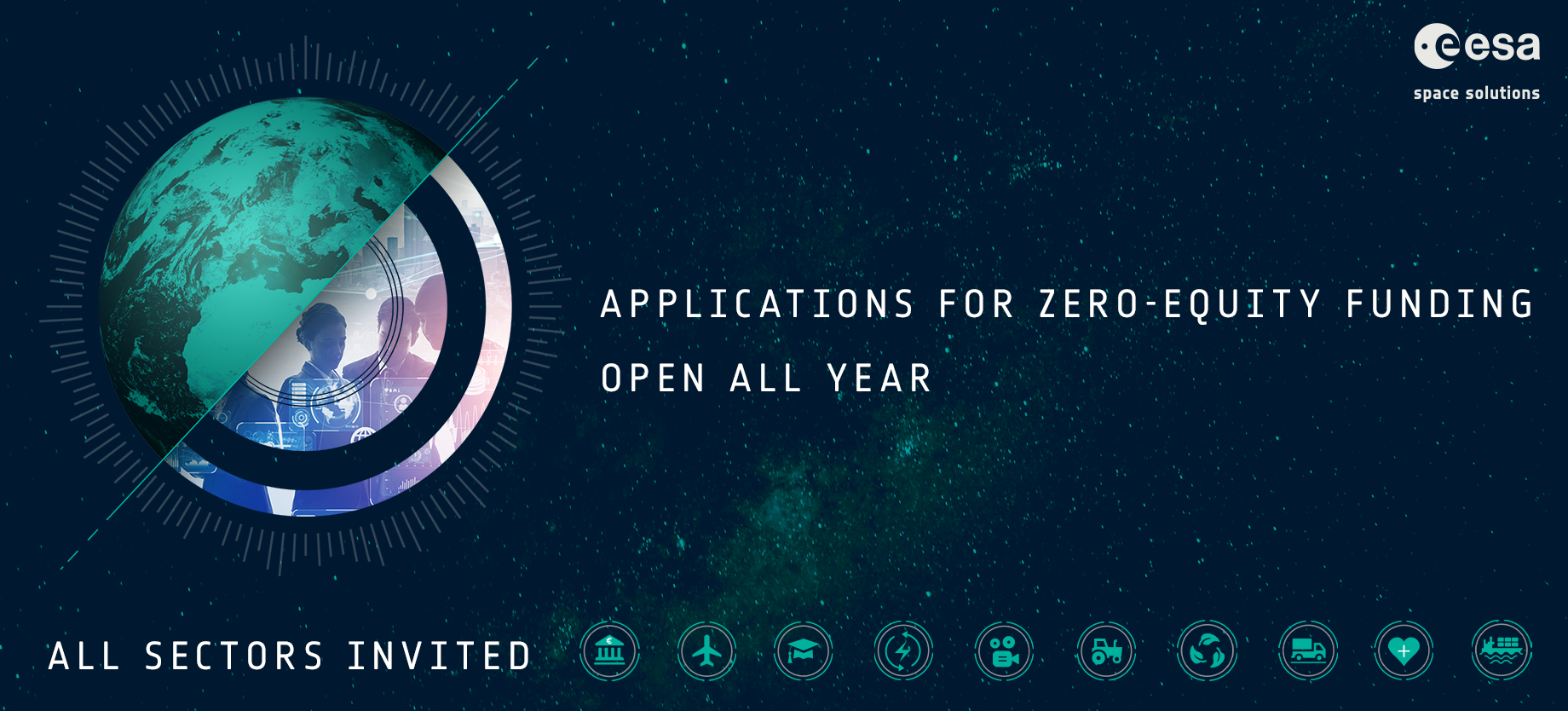AP-Swiss opening conference a success
The AP-Swiss Opening conference took place on 13 February 2013 at the Rolex Learning Centre of EPFL in Lausanne. The objectives of the conference were:
-to present the current capabilities that space infrastructures can offer,
-to introduce the new opportunities offered by the IAP programme of ESA, and
-to identify the priority know-how and needs of the Swiss industry, including both service providers and end users.
The Conference was also intended to introduce AP-Swiss, the recently established IAP Ambassador Platform for Switzerland, co-sponsored by ESA and the Swiss Space Office and dedicated to fostering the development of integrated space-based applications with and for the Swiss industry.
The Conference provided an opportunity for Swiss stakeholders to network and interact with each other. Nearly 100 attendees representing some 40 Swiss private companies and 10 institutional entities (federal departments, international organizations and universities), took part.
The conference was opened by Daniel Neuenschwander, Director of the Swiss Space Office and Magali Vaissiere, Director of Telecommunications and Integrated Applications at ESA.
Car navigation systems, television broadcast and Google Earth are the three most successful applications of space to date, each relying on a particular space technology. Meteorological forecasting is another example where several technologies are jointly used. The increasing ability, offered by the latest IT advances, to combine the capabilities of positioning systems, Earth observation and telecommunication satellites, opens new opportunities for applications and services for many economic sectors: transport, logistics, commodities, insurance and finance, safety and security, infrastructure management, land and urban development, energy, food, water and tourism. The presentations at the Conference underlined the following priorities for the Swiss space services industry:
- infrastructure monitoring for safety,
- agriculture applications (yield forecast, insurance, certification),
- snow related applications (ski resorts management and safety,
- impact of snow on water availability, flood hazards and energy production), and
- UAV (mission support services, applications).
Conference participants also recognised the need to proactively develop a Swiss commercial capability in the sectors of energy and water management, including the induced impact of their exploitation. These priorities reflect the existing know-how of Swiss service companies dealing with space technologies and infrastructures as well as the major current trends in market developments.
All the presentations are publicly available and can be found on the website of AP-Swiss.
Successful ESA-EDA Flight Demonstration on Remotely Piloted Aircraft Systems (RPAS) Insertion into Civil Airspace

- The trial was carried out with success this Wednesday in the San Javier Air Base in Murcia (Spain).
- This exercise is the key element of the DeSIRE project funded by the European Space Agency and the European Defence Agency and carried out by an international consortium led by Indra.
- The RPAS capability to share the sky with a conventional aircraft thanks to the transmission of its command and control communications and communications between air traffic controller and pilot on the ground via satellite was proven.
- The benefits of satellite communications for enabling (in beyond the line of sight conditions) the RPAS to send in real-time high quality data to the ground control station to aid maritime surveillance services was also demonstrated.
San Javier Air Base (Murcia) was selected to conduct the trials and demonstrate that satellite communications are suitable to operate Remotely Piloted Aircraft Systems (RPASs) and integrate them into civil airspace.
DeSIRE Demonstration: RPAS used for the test flights
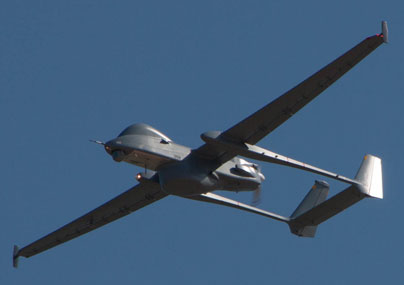
The DeSIRE project (Demonstration of Satellites enabling the Insertion of RPAS in Europe) is funded by the European Space Agency (ESA) and the European Defence Agency (EDA) within an initiative to support the utilisation of RPAS complemented by satellites for commercial and governmental applications.
To undertake this project the consultancy and technology multinational Indra (Spain) leads a European industrial consortium formed by AT-One (Germany and the Netherlands), SES ASTRA (Luxembourg), Thales Alenia Space (Italy and France) and CIRA (Italy).
DESIRE has undertaken a series of test flights to demonstrate the role of satellite communications for integrating in civil and military airspace RPAS flight Beyond Line of Sight (BLOS). The concepts and applicable procedures were defined in the precursor feasibility studies. In particular, the flight completed this Wednesday provided a generic terrestrial and maritime surveillance service, demonstrating the dual use of RPAS.
In the presence of the Chief of Staff of the Air Force, Francisco Javier García-Arnaiz, an aircraft without a pilot on board took off from the San Javier runway at 11:00 a.m. on Wednesday 24 April and completed a 6-hour flight in civil and military airspace. The operation was timed to coincide with civil and military flights operating from the base, which shares its facilities with Murcia Airport.
After take-off, the aircraft switched from its Line of Sight (LOS) data link , to its satellite data link, capable to operate Beyond Line of Sight (BLOS), and started its operational mission in segregated airspace, sending to the ground, by means of the satellite data link, the signals from its onboard sensors.
The RPA then climbed to 20,000 feet (6,096 m), entering airspace class C, managed by AENA, the Spanish Air Navigation Service Provider (ANSP), from Barcelona Control Centre. The pilot of the RPA, located at the Ground Control Station, followed all the indications issued by the AENA air traffic controllers, acting like any other civil or military aircraft. The difference is that the pilot was not on board and the radio communication with the control centre was transmitted from the aircraft to the operator via satellite.
During this phase of the flight, a manned aircraft from the Air Force Academy approached the RPA, simulating frontal and 90º collision trajectories. The pilots of the two aircraft followed the separation instructions issued by the air traffic controllers, demonstrating the safe operation of remotely piloted aircraft even in an emergency situation such as the separation of two aircrafts on a collision course.
Throughout the exercise, the data of SACTA, AENA's air traffic control system based on secondary radars, was available to the pilot of the RPA in the Ground Control Station, enabling him to improve the situational awareness of nearby aircrafts, with more details and precision than an on-board pilot would have. A radar located on board the RPA was also used to detect surrounding traffic and the data were transmitted to the pilot through the satellite link. The aim was to define and test the air traffic control and operation procedures applicable to a remotely piloted aircraft and to evaluate the safety of the satellite link and the reaction capacity of the aircraft's ground pilot, both in routine operation and in emergency situations.
All the information collected in these tests will be analysed and compared with the safety requirements being established by the European Aviation Safety Agency (EASA) and the operational requirements being set by EUROCONTROL.
During the flight, the payload data collected from the sensors on-board the aircraft (AIS receiver, radar and video) were transmitted in real-time to the Ground Control Station and further processed to enable ships’ detection and identification.
The execution of the project was possible thanks to the collaboration of the Spanish Air Force, which allowed the use of San Javier Air Academy facilities for the demonstration. Staff from the Air Force UAS School, sited in Matacan (Salamanca), supervised the operation of the RPA and San Javier military air controllers managed its take-offs and landings and its operations in military airspace. The RPA was granted an Airworthiness Experimental Certificate (AEC) by INTA to guarantee the safety of the system, under the envisaged operational conditions. AENA and AESA collaborated for the part of the flight to take place in civil class C airspace and the definition of the tests and of the applicable air traffic control and safety procedures.
The civil future of RPAs
The development of Remotely Piloted Aircrafts originated in a defence context. However, their utilisation for civil and security purposes has significant commercial potential.
Possible uses include fire fighting; highway control; electricity line, critical infrastructures and border surveillance; environmental protection surveillance; management of emergencies and even goods transport.
The take up of RPAS exploitation for civil and security use would also enable the dual use logic to take full advantage of RPAS cost reduction.
Current legislation does not provide a harmonized framework in Europe for enabling RPAS to fly in civil airspace, in particular Beyond Line of Sight (BLOS). This situation is curbing their use and application in the civil sphere thus making it difficult for the European industry to develop the technologies and equipment that will make their use possible in the future. The demonstration undertaken within the DeSIRE project aims at establishing an agreed set of requirements that could serve as a basis for the future definition of the regulatory framework for RPAS Air Traffic Integration in Europe.
The DeSIRE project is part of the joint initiative undertaken by EDA and ESA, which follows a number of activities and projects initiated by the two agencies in the RPAS domain. Among these, the Air4All Study and MIDCAS project managed by EDA and the SINUE and ESPRIT studies managed by ESA.
Call for Ideas on ARTES 3-4 Satcom Applications - Submission Deadline Extended
 Due to several requests from interested organisations, the deadline for ESA's Call for Ideas on ARTES 3-4 Satcom Applications is being extended by one week to allow time for further inputs.
Due to several requests from interested organisations, the deadline for ESA's Call for Ideas on ARTES 3-4 Satcom Applications is being extended by one week to allow time for further inputs.
You can now submit the ideas up until 22nd July 2013 by completing and returning the attached Response Form by email to iap@esa.int, putting ARTES 3-4 Satcom Applications CFI in the subject heading. The Response Form can be downloaded directly from the ESA IAP portal at:
http://iap.esa.int/opportunities/iap/ARTES-3-4-applications/Response Form
All ideas will be treated confidentially by ESA, and each submitter will be contacted individually in order to discuss the best way forward.
Best wishes,
The IAP Team
Reacting to a Crisis
Keeping all lines of communications open during a crisis is critical . and the Dublin Fire Brigade has shown how this can be done using satellite and hybrid technologies.
An emergency exercise in Malahide estuary, north of Dublin, Ireland, put the fire service.s pilot information and communication system through its paces last month.
 REACT, or Resource for Emergency services to Access Command and control data using satellite and hybrid Technologies, is a project co-funded by ESA.s ARTES 3.4 satcom applications programme.
REACT, or Resource for Emergency services to Access Command and control data using satellite and hybrid Technologies, is a project co-funded by ESA.s ARTES 3.4 satcom applications programme.
It provides secure and reliable exchange of information between emergency personnel on the scene and their command and control centre during a crisis and incidents such as car accidents.
REACT combines mobile phone technology with satcoms and the emergency service.s communication system, TETRA. This ensures there is always an open link during a major incident, even if the phone network is not working or overloaded.
 Thanks to broadband satcoms, the system provides a range of voice, data and video channels between the fire service personnel on the ground and the commanders in a central command and control room. This enables the controllers to coordinate the response using the information they are receiving from officers on the ground.
Thanks to broadband satcoms, the system provides a range of voice, data and video channels between the fire service personnel on the ground and the commanders in a central command and control room. This enables the controllers to coordinate the response using the information they are receiving from officers on the ground.
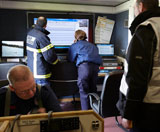 For the exercise, an Incident Command Unit was sent to the emergency scene, adapted with a Ka-band satellite dish and a CCTV camera to send and receive information and images.
For the exercise, an Incident Command Unit was sent to the emergency scene, adapted with a Ka-band satellite dish and a CCTV camera to send and receive information and images.
The vehicle operates as a communications hub, providing realtime links through voice and video conferencing services from the scene to the command and control room.
This allows an operational picture of the incident to be shared between the scene commander and the command and control personnel, who are more efficient at delivering support to officers at the scene.
 A touchscreen monitor inside the vehicle gives access to REACT applications, such as an interactive smartboard for sharing maps, plans and sketches with the control room. High-resolution images from the cameras of first-responders can also be sent.
A touchscreen monitor inside the vehicle gives access to REACT applications, such as an interactive smartboard for sharing maps, plans and sketches with the control room. High-resolution images from the cameras of first-responders can also be sent.
REACT provides seamless streaming of audio, video and data from the incident to the commanders, giving an all-round view of the situation on the ground and providing an invaluable realtime picture.
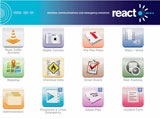 Lead partner Skytek has made sure that the look and feel of the control panel and electronic forms fit with Dublin Fire Brigade.s existing operational procedures and paper-based records, allowing personnel to use the system and software with minimal training.
Lead partner Skytek has made sure that the look and feel of the control panel and electronic forms fit with Dublin Fire Brigade.s existing operational procedures and paper-based records, allowing personnel to use the system and software with minimal training.
ESA’s Olivier Becu welcomed the demonstration of REACT in an emergency response exercise: “The experience gained from this exercise enables Skytek to verify that the system actually supports the Dublin Fire Brigade to provide an integrated and coordinated response to an emergency event.”
Ritchie Hedderman, Head of Operations at the Dublin Fire Brigade, added, .In the event of a major emergency, secure and reliable communications are vital to the emergency services.
"I feel that the satellite communications in time will prove to be the primary and preferred means for communicating as it can supply voice, video and data back to regional and national control centres where strategic commanders can assess situation on the ground and provide the back up resources in order that a successful conclusion to the emergency can be obtained".
The satcom system has been made possible as a result of an agreement between ESA and UK company Avanti to provide capacity on the Hylas-1 satellite, which includes a Ka-band spot beam covering Ireland.
Banking on Satellites in Africa
 Satellites are making it possible to transfer money between remote locations in sub-Saharan African countries that are otherwise unconnected to the outside world.
Satellites are making it possible to transfer money between remote locations in sub-Saharan African countries that are otherwise unconnected to the outside world.
An ESA project looking at ways to use satellites for services in developing nations where land networks are simply impossible or non-existent gave rise to the Agency.s SatFinAfrica pilot project in 2011.
It was so successful that a company called SatADSL was set up in Belgium early last year to provide satcom for financial services to Africa. Microfinance offices in different villages, linked via satellite, allow people to transfer or withdraw money with ease.
The satcom service is sold via local African distributors who resell it to the microfinance offices on behalf of SatADSL.
Currently, SatADSL serves more than 100 offices and the number is growing. Each branch has its own satellite terminal.
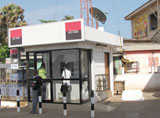 SatADSL has just received .1 million from a leading Belgian private equity investor to support this growth, with the aim of connecting thousands of branch offices of microfinance companies in sub-Saharan Africa via satellite.
SatADSL has just received .1 million from a leading Belgian private equity investor to support this growth, with the aim of connecting thousands of branch offices of microfinance companies in sub-Saharan Africa via satellite.
Other services offered by SatADSL include cash machines to withdraw money at any time, even in remote and otherwise unconnected places.
The machines operate in the same way as they do in Europe, only in Africa a satellite terminal sits on the roof. For those withdrawing cash, the procedure is no different. Satcom also provides the same level of security as terrestrial networks.
SatFinAfrica uses Sat3Play satellite technology developed by Newtec in Belgium with assistance from ESA.s Advanced Research in Telecommunications Systems, or ARTES, programme. The satellite link is provided by SES Astra in Luxembourg using SES Broadband.
 When someone uses a bank machine, the information is sent via satellite to the SES hub in Luxembourg. This is transferred via the virtual private network tunnel to headquarters in Africa.
When someone uses a bank machine, the information is sent via satellite to the SES hub in Luxembourg. This is transferred via the virtual private network tunnel to headquarters in Africa.
The confirmation is sent back to the user through the same system. Business is conducted in a matter of minutes rather than the days it used to take.
.We are extremely pleased to have been instrumental in helping SatADSL become an important player in the African market of transactional services for the banking sector using Sat3Play, a leading technology created in Europe., said Davide Tomassini, ESA.s Technical Officer.
.Sea&Space Exploration is extremely happy to have been partnering up with ESA in this R&D activity that resulted in the creation of a commercial operating company, SatADSL. SatADSL is exploiting European Technologies for the benefit of African people, and supporting the development of financial services outside densely populated urban areas., added Caroline De Vos, Chief Operations Officer of SatADSL.
The standard procedure for placing contracts with ESA is the Open Competition. In this case, ESA is inviting companies and organisations to submit a Full Proposal in response to a particular subject as defined by the Agency in coordination with the needs and requirements of the user community collaborating with ESA.
Open competitive ITTs cover one of the following activities:
Documents
Proposal-related Documents
N.B. Please note that the Full Proposal related documents and the Management Requirements are provided here below for information only.
Please note that all the templates are ESA Unclassified releasable to public
The officially applicable versions of these documents are available in the esa-star Publication area, under the relevant Announcement of Opportunity (AO10494).
Conference highlights the benefits satellite applications can offer SMEs
A recent conference, held in Bratislava, Slovakia, entitled .SMEs and entrepreneurs: boosting business using satellite applications" highlighted the opportunities satellite services can offer small and medium sized enterprises (SMEs).
The conference, co-organised by Eurisy and the Ministry of Education, Science, Research and Sport of the Slovak Republic, presented successful examples of how SMEs can benefit from economic growth, improved business processes and increased competitiveness through the use of satellite applications.
The conference brought together SMEs and entrepreneurs from a variety of sectors outside the space industry to learn about innovative and operational satellite applications for enhancing business processes and creating new business and services.
Delegates were able to find out more about satellite services and how they might help address their business needs by hearing testimonial from SME end-users of satellite applications on how satellite technology has benefitted their businesses.
Representatives from SMEs shared concrete examples of how satellite applications are used in different sectors and highlighted success stories from the use of satellite services in the Slovak region, with early adopters of satellite applications reporting their value for money was proven in daily operations.
Key issues discussed at the one day event included the need to help SMEs access satellite applications in order for them to compete in the global market and the barriers which prevent them from adopting satellite services. It was highlighted that SMEs need dedicated support in order to overcome some of the obstacles preventing their use of satellite applications.
One of the major issues discussed was how the take up of satellite services by SMEs is impacted by a lack of sufficient resources, preventing SMEs from penetrating new markets and developing solutions to meet their needs. SMEs may be financially vulnerable since they generate modest profits and have little access to private capital. However they are a vital part of the European economy and therefore have a crucial role in its success and competitiveness.
The key role that SMEs play in the European economy and the difficulties they encounter with accessing resources for implementing satellite solutions for their businesses highlights the importance of assistance from European support programmes. However, delegates reported that they find it hard to understand and access the mechanisms for funding and support in Europe.
The IAP Ambassador Platform for SMEs (APsme), hosted by Eurisy and IAP Ambassador Platform for Central and Eastern European Region (APCEE), presented information about IAP opportunities for SMEs in the Slovak Republic to both use and develop new products and services based on satellite technology.
Marie-Laure Germain, APsme manager explained; .Helping to unlock the potential within the SME market for satellite solutions has benefits for both the integrated applications industry and SMEs. That is why we are working with SMEs to raise awareness of the possible advantages offered to them by satellite services and help them to overcome the barriers they may encounter when trying to access satellite applications..
Conclusions and recommendations of the conference can be viewed on the Eurisy website here




